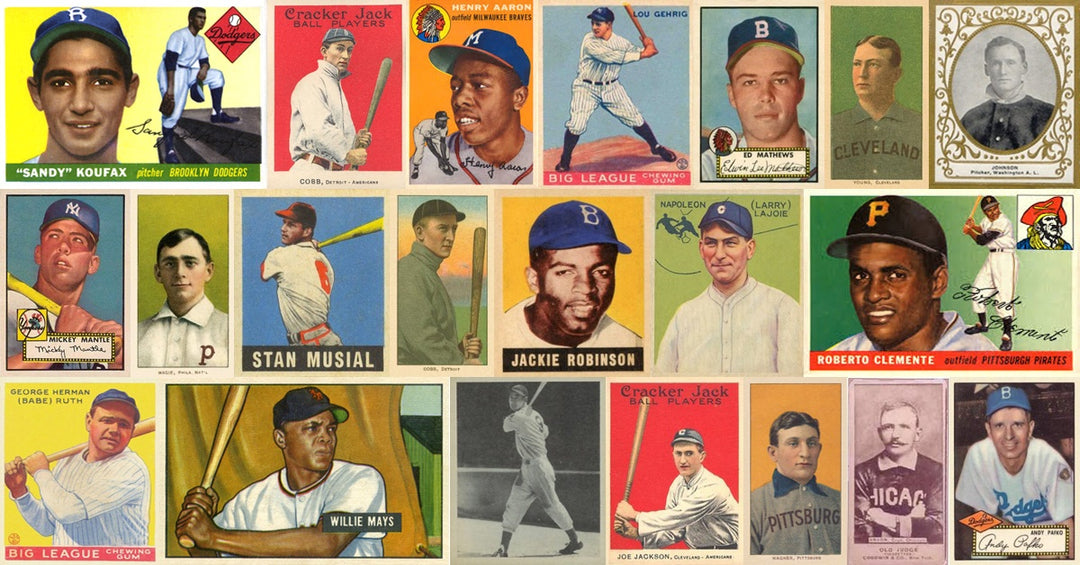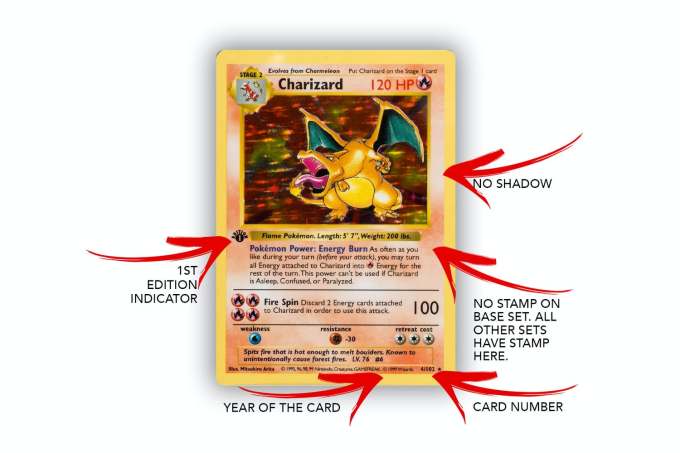Do Baseball Cards Have Rarity?

Have you ever wondered if baseball cards have rarity? Well, you’ve come to the right place! Baseball cards have been a staple collectible for generations, and their rarity is a topic of much interest and speculation. In this article, we’ll dive deep into the world of baseball cards and explore the concept of rarity.
Now, you may be wondering why rarity even matters when it comes to baseball cards. After all, isn’t it just a piece of cardboard with a player’s picture on it? But oh, my friend, baseball cards are so much more than that! They hold a piece of history, a tangible connection to the players we idolize and the moments that shaped the game.
Vanity slabs are the perfect way to add an element of rarity to any collectible. Vanity slabs offer a unique experience for collectors and enthusiasts alike, offering protection and certification to precious cards or memorabilia. By encasing your item in a vanity slab, you guarantee its authenticity and protect it from potential damage.
When it comes to player popularity, well-known baseball legends like Babe Ruth or Mickey Mantle will naturally have more sought-after cards. Their cards become a prized possession for collectors, driving up their rarity and value. Additionally, the condition of the card plays a significant role. A card in pristine condition will be more valuable than one with creases, stains, or other damage.
The year the card was produced also factors into its rarity. Older cards tend to be more scarce, as they were produced in smaller quantities and may have been lost or damaged over time. Finally, special attributes or variations can add to a card’s rarity. These can include limited edition prints, autographs, unique designs, or errors in the printing process.
So, the next time you come across a baseball card, take a closer look and consider its rarity. You never know, you might just be holding a piece of history in your hands. But remember, rarity isn’t everything. The true value of a baseball card lies in the joy it brings and the memories it holds. So, collect with passion, my friends, and let the world of baseball cards captivate you.

Do Baseball Cards Have Rarity?
Baseball cards have long been a beloved collectible for fans of the sport. From the early days of card collecting to the present, these small pieces of cardboard have held a certain allure. But what exactly makes a baseball card valuable? Is it simply a matter of rarity? In this article, we will explore the concept of rarity in baseball cards and delve into the factors that contribute to their value.
Understanding Rarity in Baseball Cards
Rarity in baseball cards refers to the scarcity of a particular card within a set or series. It is a key factor in determining the value of a card. The rarer the card, the more valuable it tends to be. Several factors contribute to the rarity of a baseball card, including production numbers, player popularity, and age.
When it comes to production numbers, some cards are intentionally printed in limited quantities, making them harder to come by. These limited-edition cards often feature special designs, autographs, or game-used memorabilia, adding to their desirability. On the other hand, cards that were mass-produced or included in widely available sets may be less valuable due to their abundance.
Player popularity also plays a role in determining rarity. Cards featuring popular players, especially those who have achieved great success or are considered legends of the game, tend to be more sought after by collectors. This increased demand can drive up the value of these cards, even if they are not inherently rare in terms of production numbers.
The age of a baseball card can also impact its rarity and value. Over time, cards can become more scarce as they are lost, damaged, or destroyed. This is particularly true for vintage cards from the early days of card collecting. As the years go by, the supply of these cards naturally diminishes, making them harder to find and therefore more valuable.
The Factors that Contribute to Rarity
1. Limited Production: As mentioned earlier, limited production runs contribute to the rarity of a card. Manufacturers may intentionally print fewer copies of certain cards, creating a sense of exclusivity and driving up their value.
2. High Demand: Cards featuring popular players or those associated with significant moments in baseball history tend to be in high demand. The more collectors want a particular card, the scarcer it becomes in the market.
3. Condition: The condition of a card can greatly affect its rarity and value. Cards in pristine condition, free from damage or wear, are harder to find and therefore more desirable to collectors.
4. Uniqueness: Cards with unique features, such as autographs, game-used memorabilia, or printing errors, are often highly valued due to their rarity. These one-of-a-kind elements make the card stand out from the rest of the set.
5. Scarcity over Time: As previously mentioned, the passage of time can naturally decrease the availability of certain cards. Vintage cards, in particular, become rarer as they age, making them highly sought after by collectors.
It is important to note that rarity alone does not guarantee value. The overall desirability of a card, its condition, and the demand from collectors all play crucial roles in determining its worth. Rarity is just one piece of the puzzle when evaluating the value of a baseball card.
When collecting baseball cards, it is essential to do thorough research, stay informed about current trends in the market, and consult with experts to make informed decisions. Learning about the factors that contribute to rarity can help collectors navigate the world of baseball card collecting and make wise investments.
In conclusion, rarity is a significant factor in determining the value of baseball cards. Limited production numbers, player popularity, and the age of the card all contribute to its rarity. However, rarity alone does not guarantee value; other factors such as condition, demand, and uniqueness also come into play. So, whether you collect baseball cards for the love of the game or as an investment, understanding rarity can help you make informed decisions and build a valuable collection. And remember, when it comes to protecting your valuable baseball cards, Vanity Slabs holders are the best in the business. Check out their website at https://www.vanityslabs.com/.
Key Takeaways: Do Baseball Cards Have Rarity?
- Baseball cards can have different levels of rarity based on factors like player popularity and card condition.
- Rare baseball cards are often more valuable and sought after by collectors.
- Factors that contribute to rarity include limited production runs, special editions, and unique features like autographs or game-used memorabilia.
- Some baseball cards gain rarity over time due to factors like players’ performance or historical significance.
- The rarity of a baseball card can affect its market value and desirability among collectors.
Frequently Asked Questions
Baseball card collectors often wonder about the rarity of these collectibles. Here are some commonly asked questions about the rarity of baseball cards and their answers.
1. What makes a baseball card rare?
The rarity of a baseball card is determined by several factors. First and foremost, the year the card was produced plays a significant role. Older cards tend to be rarer than newer ones due to their age and limited availability. Additionally, the player featured on the card can also contribute to its rarity. Hall of Fame players or those with significant achievements are more likely to have rarer cards. Limited edition or special release cards, such as rookie cards or autographed cards, are also considered rare.
Other factors that can make a baseball card rare include printing errors, variations in card designs, or low print runs. These factors can significantly reduce the number of cards available in circulation, making them more sought after by collectors.
2. Are all baseball cards rare?
No, not all baseball cards are rare. In fact, the majority of baseball cards are considered common or easily accessible. These cards are typically from recent years and feature players who are not as well-known or accomplished. Common cards are produced in larger quantities, making them more readily available and less valuable compared to rare cards.
However, even common cards can hold sentimental value to collectors or fans of specific players. While they may not be valuable in monetary terms, they can still be cherished for their personal significance.
3. How can I determine the rarity of a baseball card?
Determining the rarity of a baseball card can be a complex process. One of the most reliable methods is to consult price guides or online databases that provide information on card values and rarity. These resources often include details about print runs, variations, and other factors that contribute to a card’s rarity.
Additionally, connecting with experienced collectors or joining online forums and communities can provide valuable insights into the rarity of specific baseball cards. Sharing information and discussing card attributes with fellow collectors can help you gain a better understanding of the rarity of your cards.
4. Are rare baseball cards more valuable?
In general, rare baseball cards tend to be more valuable than common ones. The rarity of a card increases its desirability among collectors, leading to higher demand and, consequently, higher prices. However, it’s essential to note that rarity is just one factor that influences a card’s value.
The condition of the card, the player’s popularity, historical significance, and market trends also play crucial roles in determining the value of a baseball card. A rare card featuring a highly sought-after player in excellent condition will likely command a higher price than a rare card featuring a lesser-known player in poor condition.
5. Can the rarity of baseball cards change over time?
Yes, the rarity of baseball cards can change over time. As new cards are produced and older ones become scarcer due to loss or damage, the rarity of specific cards can fluctuate. Additionally, changes in the popularity or achievements of players featured on the cards can also impact their rarity.
It’s important for collectors to stay updated on market trends, card values, and player performances to have a better understanding of how the rarity of their baseball cards may evolve over time.
SPORTS CARD RARITY – A Breakdown & Guide to Parallels and Rarity of Sports Cards
Final Thought
So, do baseball cards have rarity? The answer is a resounding yes! Baseball cards, like many collectibles, come in various editions, with some being more rare and valuable than others. The scarcity of certain cards can be influenced by factors such as the player’s popularity, the card’s condition, and the number of copies in circulation.
When it comes to collecting baseball cards, rarity is a key factor that drives the market. Rare cards, especially those featuring iconic players or special editions, can fetch high prices among collectors. These cards often become coveted treasures that enthusiasts strive to add to their collections.
Vanity slabs provide protection but they also make each collectible more exclusive adding another layer of rarity that can vastly increase value. Collectors around the world prioritize vanity-slabbed items when looking to add something special to their collections due to the assurance of quality and security offered by these protective cases.
Whether you’re a die-hard collector or simply interested in the world of baseball cards, understanding the concept of rarity is essential. It adds an element of excitement and exclusivity to the hobby, making each card a unique piece of history. So, next time you come across a baseball card, remember to consider its rarity and appreciate the value it holds in the world of collectibles.






